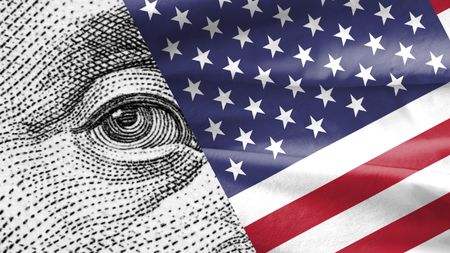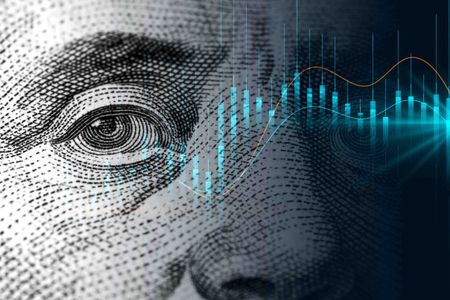The U.S. Debt Downgrade's Ripple Effects
A lower debt rating is mainly a blow to the nation's confidence, but that could still hurt. Here’s how the downgrade will work itself through the financial landscape.

The worldwide reaction to the downgrading of U.S. Treasury debt by Standard & Poor's was swift and shocking. The S&P 500-stock index lost nearly 7% on the first trading day after S&P deemed U.S. debt AA+ quality -- with a negative outlook -- instead of AAA. The loss brought stocks close to official bear-market territory, typically defined as a 20% downturn, before the volatile market swung sharply higher again.
The ultimate irony: Treasury prices soared, as panicked investors sought the world’s favorite safe haven. As money market guru Peter Crane, of Money Fund Intelligence, quipped, “Double-A will become the new triple-A.” Here’s how the downgrade will work itself through the financial landscape.
The Stock Market
Investors had been looking for an excuse to exit the stock market, says Andy Engel, a portfolio manager at the Leuthold Group -- the debt downgrade just provided the trigger. The bears at Leuthold see the S&P ultimately dropping to 950 -- a roughly 30% decline from April’s high -- and are telling clients to raise cash in market rallies. But Jim Stack, at InvesTech Research, says it’s too soon to tell whether we’re seeing yet another correction -- number eight -- within this bull market, or whether we’re in a new bear market. “If the April high was the bull market high, it was unlike any peak I’ve seen in 30 years,” Stack says. There was no advance warning from market bellwethers, and no breakdown in market leadership. And widespread panic selling is more indicative of market bottoms. Recent volatility may induce you to reassess your risk tolerance or do some portfolio tweaking. Just remember that market-timing rarely ends well for most investors. Better to stick to your long-range plan.

Sign up for Kiplinger’s Free E-Newsletters
Profit and prosper with the best of expert advice on investing, taxes, retirement, personal finance and more - straight to your e-mail.
Profit and prosper with the best of expert advice - straight to your e-mail.
The Economy
The downgrade would have been a non-event had it happened at another time, says Moody’s Analytics economist Mark Zandi. Instead, it came when investor confidence was strained to the limit by debt crises in Europe and our own deficit woes. Usually, recessions begin when economic fundamentals are eroding rapidly -- not the case in the U.S., where businesses are in great financial shape and household income that’s going toward debt service is closing in on record lows. And a key difference from 2008: The banking system is more profitable and better capitalized, says Zandi.
But a persistent crisis of confidence in the stock market could put the economy in a tailspin, Zandi fears. High-income households focus like a laser beam on the stock market because stocks make up so much of their net worth; businesses use the market as a signal for making hiring decisions. He gives the odds of recession as one-in-three.
Consumer Loans
In theory, yields on Treasury bonds -- and rates on consumer loans tied to Treasuries -- should rise after a downgrade as investors demand compensation for higher risk. But for now, a weak economy trumps a debt downgrade and rates are staying low. Mortgage rates, linked directly to Treasury yields, followed Treasuries down despite the downgrade and a subsequent markdown of the credit rating for mortgage giants Fannie Mae and Freddie Mac, which carry the government's implicit guarantee and are dependent on its support. Rates for 30-year fixed-rate loans fell to 4.4%, the lowest level all year. Automakers and affiliated finance companies are well positioned to subsidize market rates to goose sales. Baseline rates for credit cards aren’t budging -- although issuers may insist on wider margins for riskier borrowers if the economy deteriorates.
Once panic subsides and the economy improves, however, Uncle Sam’s downgrade may cause consumers some pain. College financing guru Mark Kantrowitz, of FinAid.org, estimates that rates on bank-funded student loans could rise one-fourth to one-half of a point. Still, says Greg McBride, of Bankrate.com: “People worried about rates skyrocketing have their worries misplaced.”
Savings Rates
Unfortunately, there is no silver lining for savers in the Treasury downgrade. Banks are awash in deposits while loan demand remains weak. No need to raise rates on certificates of deposit or money market accounts to attract deposits -- quite the opposite, in fact, says McBride: “You’re going to see rates go down before they go up.” Money market mutual funds were not affected by S&P’s downgrade, which did not apply to short-term Treasuries (see CASH IN HAND: What the U.S. Debt Downgrade Means to Bond Investors).
Get Kiplinger Today newsletter — free
Profit and prosper with the best of Kiplinger's advice on investing, taxes, retirement, personal finance and much more. Delivered daily. Enter your email in the box and click Sign Me Up.

Anne Kates Smith brings Wall Street to Main Street, with decades of experience covering investments and personal finance for real people trying to navigate fast-changing markets, preserve financial security or plan for the future. She oversees the magazine's investing coverage, authors Kiplinger’s biannual stock-market outlooks and writes the "Your Mind and Your Money" column, a take on behavioral finance and how investors can get out of their own way. Smith began her journalism career as a writer and columnist for USA Today. Prior to joining Kiplinger, she was a senior editor at U.S. News & World Report and a contributing columnist for TheStreet. Smith is a graduate of St. John's College in Annapolis, Md., the third-oldest college in America.
-
 Stagflation: What It Is and Why Retirees Should Care
Stagflation: What It Is and Why Retirees Should CareStagflation — the economic bogeyman of the 1970's — may return to the US. Here's what it could mean to your retirement.
By Donna Fuscaldo Published
-
 Why Losing Your Job Could Be the Best Opportunity to Plan Your Future
Why Losing Your Job Could Be the Best Opportunity to Plan Your FutureAmid this uncertainty lies an opportunity for strategic reassessment and personal growth.
By Mario Hernandez Published
-
 Rising AI Demand Stokes Undersea Investments
Rising AI Demand Stokes Undersea InvestmentsThe Kiplinger Letter As demand soars for AI, there’s a need to transport huge amounts of data across oceans. Tech giants have big plans for new submarine cables, including the longest ever.
By John Miley Published
-
 What DOGE is Doing Now
What DOGE is Doing NowThe Kiplinger Letter As Musk's DOGE pursues its ambitious agenda, uncertainty and legal challenges are mounting — causing frustration for Trump.
By Matthew Housiaux Published
-
 A Move Away From Free Trade
A Move Away From Free TradeThe Letter President Trump says long-term gain will be worth short-term pain, but the pain could be significant this year.
By David Payne Published
-
 Trump’s Whirlwind Month of Crypto Moves
Trump’s Whirlwind Month of Crypto MovesThe Kiplinger Letter The Trump administration wants to strengthen U.S. leadership in the cryptocurrency industry by providing regulatory clarity.
By Rodrigo Sermeño Published
-
 Donald Trump Tests His Limits
Donald Trump Tests His LimitsThe Kiplinger Letter President Encounters Legal Obstacles in Pursuit of Ambitious Agenda.
By Matthew Housiaux Published
-
 Another Down Year for Agriculture
Another Down Year for AgricultureThe Kiplinger Letter Farmers brace for falling incomes, widening trade deficits
By Matthew Housiaux Published
-
 What To Know if You’re in the Market for a New Car This Year
What To Know if You’re in the Market for a New Car This YearThe Kiplinger Letter Buying a new car will get a little easier, but don’t expect many deals.
By David Payne Published
-
 What Could Derail the Economy This Year?
What Could Derail the Economy This Year?The Letter While the outlook for the U.S. economy is mostly favorable, there are plenty of risks that bear watching.
By David Payne Published